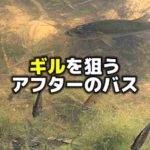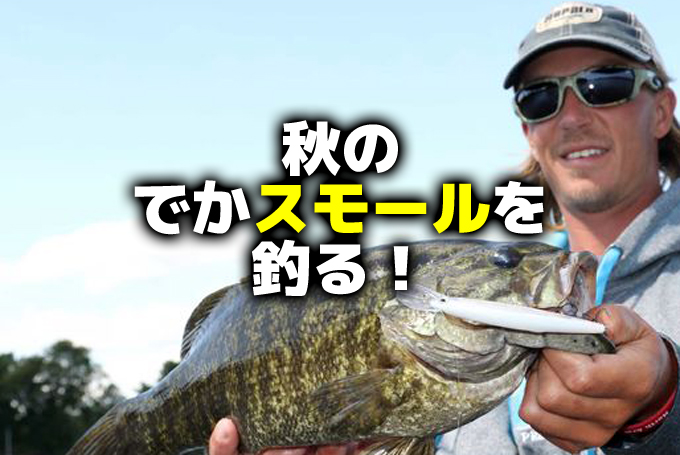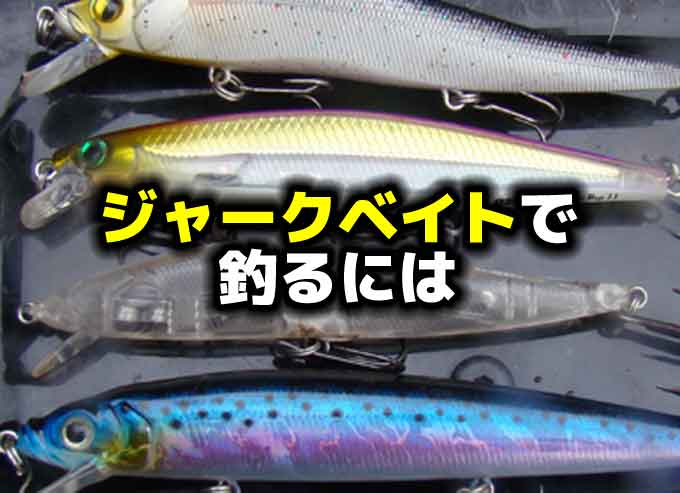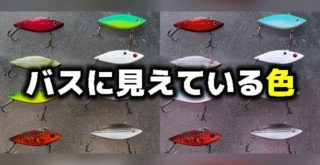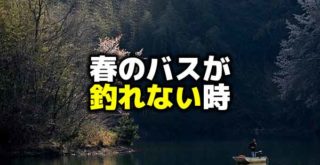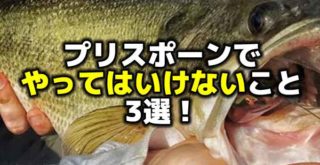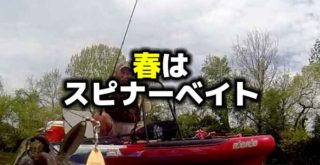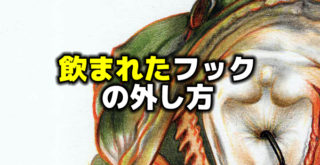オカッパリのバス釣りで間違えてはいけないこと

Photo by scout.com
こんにちは!店長の小山です!
本日は海外サイトより、”Avoid this Mistake when Fishing from the Bank”という記事を引用してご紹介いたします。
引用先:scout.com”Avoid this Mistake when Fishing from the Bank”ByWALKER SMITH oct,16 2018(海外サイトです)
オカッパリでのバス釣りは、なぜか軽く見られる傾向があります。
ボートでのバスフィッシングと比べると、たしかに準備も簡単ですし、レンタル代やガソリン代やスロープ代などの費用も発生しません。気軽に行える釣りという意味では、軽いのかもしれません。
しかし水辺という命の危険さなどはボートもオカッパリも関係なく重い責任がありますし、なにより、釣れるバスがボートの方がクオリティが高いかと言えば必ずしもそうではなく、ボートよりオカッパリで釣ったバスの方が自己記録としては大きい、という方は多いはずです。
誰にでも平等で、誰にでも楽しむことができるのが、オカッパリのバス釣りですよね。
ただし、平等とは言っても、オカッパリの釣りに対する知識や経験の差によって、釣果は平等でないことがあります。
この記事は、アメリカのバスフィッシング専門メディア「Wired 2 Fish」の記事で、記者のウォーカー・スミス氏が、オカッパリのバスフィッシングにおいて大切な知識を共有してくれています。
アメリカのバスフィッシングでは珍しい、オカッパリの記事です。ぜひ読んでみてください。
ハイウェイをターゲットにすること
I’m not aware of any scientific definition of a break line, so here’s an explanation from a Georgia redneck: If you were to step into a pond from the bank, let’s say the water would be ankle deep. If you were to keep walking towards the middle of the pond, you’d eventually step off of a shelf and find yourself in knee-deep or waist-deep water. That depth change closest to the bank is what I call the break line.
Bass, especially pond bass, use these break lines every day. These small shelves allow them to cruise the perimeter of the pond and strategically ambush unsuspecting prey hanging out in the shallows. In addition, bass also use them for easy travel. Bass always prefer security and they like to be “against” something, whether it’s a dock post, a log or a stump. Many ponds are void of this type of cover, so bass will travel parallel to these break lines because that shelf makes them feel more secure.
So, this begs the question: If the bass use ‘em so much, why in the world are we so hell-bent on casting to the middle of the pond? It always seems like bank anglers want to get close to the middle and boat anglers want to get closer to the shore.
Let’s break that habit, though. Mark my words: You will catch more and bigger bass from shore by targeting these break lines. The biggest pond bass of my life have all come utilizing this strategy.
私はブレイクラインというものの科学的な定義を知りませんが、ジョージアの変人の説明ではこうあります。:もしあなたがバンクから池に足を踏み入れたとき、その深さは足首くらいだとしましょう。あなたが池の真ん中に向かって歩き続けていたら、どこかで段差があり、膝や腰の深さに身を置くことになります。そのバンクに最も近いところの深さの変化こそが、私がブレイクラインと呼ぶものです。
バス、特に池のバスは、毎日これらのブレイクラインを使用します。これらの小さな棚(段差)は、池の周りを回遊し、シャローに集まる無警戒な獲物を戦略的に待ち伏せすることができます。これに加えて、バスも回遊のためにこれを利用しています。バスはいつも安全であることを好んでおり、桟橋の脚、ウッドカバーやスタンプなど、何かに「身を寄せる」のが好きです。多くの池にはこういったカバーがありませんので、バスはこれらのブレイクラインに安全性を感じ、これと平行に移動するのです。
そこで、こんな疑問が浮かび上がります。:もしバスがその段差を利用するのなら、なぜ世界では我々は池の真ん中にキャストするのでしょうか?常に、オカッパリアングラーは池の真ん中へ、ボートアングラーは岸に近づきたいと思うようです。
しかし、その習慣を壊してみましょう。私の言葉をよく覚えておいてください:これらのブレイクラインをターゲットにして、岸からより多くの大きなバスをキャッチしましょう。私の人生最大の池のバスは、すべてこの戦略を利用して来ました。
OK、分かりました。では、どうすればいいのでしょうか
Targeting these break lines can be a bit tricky at first, especially if you’re fishing in heavily wooded areas. Essentially, I recommend making 45-degree casts from the bank. As you retrieve your lure, you’ll maximize your time in the most productive strike zone. You’ll bring your lure through the deeper side of the break line and the shallow shelf, just in case a bass is actively pursuing prey in the shallows.
This casting angle can be a bit awkward and often the casts aren’t too pretty. There will be some degree of difficulty, but you’ll get the hang of it in no time. If you’re fishing from a cluttered bank with small openings for your back cast, I strongly suggest investing in a shorter rod. A 6-foot, medium-heavy rod can be your best friend in these situations. It’ll be short enough to allow for more accurate casts in tight quarters, but it’s still long enough for enough leverage on the hookset.
これらブレイクラインをターゲットにするとき、特に木々が生い茂るエリアで釣っている場合は、最初は慎重を要することがあります。 基本的に、私はバンクから45度の角度でキャストすることをお勧めします。 ルアーをリトリーブしたとき、最も有効なストライクゾーンで時間を最大限に活用できます。 あなたは、バスがシャローで積極的に獲物を追いかけている場合に備えて、ブレイクラインの深い側と浅い側の両方にルアーを通すことができるのです。
このキャストの角度には少々厄介なことがあり、キャストもしづらいことがよくあります。 いくつかルアーを木に引っ掛けてしまったとき、この角度の難しさが分かると思います。 バックキャストするにもスペースがほとんどないような密集したバンクから釣るようであれば、私はより短いロッドを使うことを強くお勧めします。 このような状況では、6フィートのミディアムヘビーロッドがあなたの相棒になることがあります。狭い地域での正確なキャスト行うのに適した長さでありつつ、確実なフッキングをするのにも充分な長さだからです。
出掛ける前にこれらのリグをチェック
There are three primary rigs I always have rigged when I go bank fishing. That’s certainly not to say other rigs won’t catch fish, but these have consistently produced for me for many years. They’re not the “sexy” stuff that everyone talks about these days, but they’re the triend-and-true rigs that have caught and will catch bass for decades.
私がオカッパリの釣りに行くとき、いつも持って行く3つの主なリグがあります。 確かに他のリグでも魚は釣ることができますが、これは私が何年もの間ずっと使ってきた有効なものです。 最近の誰もが使っているようなセクシーなものではありませんが、何十年もの間、バスを釣り続けている真実のリグです。
クリーチャー系ワームのテキサスリグ
I like to have at least one bottom-contact bait rigged up when I’m targeting break lines and of course, the ol’ Texas rig is hard to beat. I can keep it in the strike zone for a long time and it minimizes snags when I’m fishing around any type of cover.
There are a few things to consider, however. I use a pretty lightweight sinker because pond bottoms are notoriously mucky and disgusting—you won’t catch many bass with rotten leaves all over your Texas rig. I most often use a 1/8-ounce tungsten weight and I feel like it gives me the best of both worlds: I can cast it far enough and maintain my bottom contact, but it stays above the layer of muck that you’ll find in most small bodies of water.
Bait-wise, I believe it’s more of a confidence thing than anything else. I always keep a few packs of Zoom Baby Brush Hogs in the door pocket of my truck; a few packs of watermelon red for clearer water during droughts and a few packs of junebug for periods of heavier rain. That’s as complicated as I’ll make it.
私はブレイクラインをターゲットにしているときに、少なくとも1つはボトムコンタクト系のリグを持って行くのが好きです。もちろん、テキサスリグはその筆頭です。 魚のいそうなカバーの周りで長い間ストライクゾーンに保つことができつつ、根掛かりを最小限に抑えることができます。
しかし、考えるべき点がいくつかあります。 私はかなり軽量のシンカーを使用しています。なぜなら、池の底はだいたい汚いことで知られていますので、テキサスリグ全体が腐った葉っぱに埋まってしまう中で、多くのバスをキャッチできるからです。 私はたいてい1/8オンスのタングステンシンカーを使用しています。私はそれが次の両方においてベストである気がしています。:十分なロングキャスト性能がありボトムコンタクトもしやすく、 小さなフィールドにありがちなボトムのゴミの上に留まりやすいためです。
ワームについては、私は他の何よりも信頼できるものがあります。 いつもZoom Baby Brush Hogs(ベビーブラッシュホッグ)の数パックを車のドアポケットに入れておきます。 雨が降らずに水がクリアアップしている時はウォーターメロンレッド、ひどい雨期の時にはジュンビッグのいくつかのパック。 これさえあれば間違いありません。
スティックワームのワッキーリグ
I have no idea why they love it so much, but I’ve quickly learned that pond bass adore a well-placed wacky rig. As long as there’s not a bunch of pond scum of submerged vegetation, you need to have one rigged up.
The formula is simple and affordable: Grab a few packs of VMC Neko Hooks (you’ll thank me later, I promise) and a medium-action spinning rod with 8-pound line. Hook some sort of stick worm in the dead-middle and make a long, 45-degree cast. Let the wacky rig fall on completely slack line and incorporate occasional, subtle twitches with your rod tip. When your line gets heavy or starts to slowly swim to the side, you’re in business. It’s time to set the hook.
My suggested color selection is the same as the Texas rig. Some sort of green color for clear water and a dark color for dirty water. Bass aren’t scientists, so try not to get too spun out over your color choices.
私はなぜバスがこれをそんなに好きなのか分かりませんが、私は早くから池のバスがワッキーリグが好きであるということを知っていました。 水中に多くのウィードが生えていない限り、1つはリグっておいた方がいいと思います。
やり方はシンプルで簡単です:VMC Neko Hooks(ネコリグ用フック)数パックと8ポンドラインにミディアムアクションのスピニングロッドを入手してください。 スティックワームのど真ん中にフックを掛け、45度のロングキャストをします。 ラインを完全にフリーにしてワッキーリグをフォールさせ、時折、ロッドティップで微妙なトゥイッチを入れましょう。 ラインが重くなったり、ゆっくりと横に泳ぎ始めたとき、準備を整えてください。 フッキングの時間です。
私のおすすめするカラーは、テキサスリグと同じです。 クリアウォーターにはグリーン系のカラーで、濁りのある時にはダークカラーです。 バスは科学者ではありませんので、カラー選択にはあまり悩まないでください。
フロッグワーム
This is something I’ve picked up on in the last year and it has become a major player whenever I hit the local ponds. Rig up a medium-heavy casting rod with some 65-pound braid and a soft-plastic toad… and hang on. They’ll come off those break lines and completely destroy these things. They’ll be some of the most aggressive topwater bites you’ll see.
I have had a lot of luck with the Zoom Frog and YUM Tip Toad this year. If it’s a little breezy while you’re fishing, I’d probably suggest the Zoom Frog because it displaces a bite more water. If it’s calm, you’ll get plenty of bites on the YUM Tip Toad. You’ll make the same 45-degree casts with these baits.
If you can avoid the common mistake of poor casting angles, you’ll quickly unlock a new dimension of your bank fishing. I’m not saying that my tips are the gospel, but they have certainly produced some enormous bass for me over the years.
これは私が昨年から取り組んでいるもので、私が地元の池に行くたびにキープレーヤーになっています。 ミディアムヘビーのベイトロッドに65ポンドのPEラインでフロッグワームを使い、投げ続けます。 ブレイクラインから離れていても、これを完璧に襲ってきます。 これはあなたが見る最もアグレッシブなトップウォーターのバイトとなるでしょう。
今年はZoom FrogとYUM Tip Toadでたくさんの幸運がありました。 あなたが釣りをしているとき少しのさわやかな風があれば、私は恐らくズーム・フロッグをおすすめするでしょう。 ベタ凪の場合は、YUM Tip Toadでたくさんのバイトを取るでしょう。 これらのルアーで同じように45度のキャストをしていきます。
一般的なキャスティング角度の間違いを避けることができれば、すぐにオカッパリのバス釣りの新しい次元へ行くことができます。 私のヒントが絶対的な真実であると言っているわけではありませんが、これらは確かに長年にわたり私にいくつかの巨大なバスを連れてきてくれました。
いかがでしょう、これを読んで、オカッパリの間違い、皆さんはしていませんでしたでしょうか。
この記事に書かれている通り、オカッパリでは沖へ沖へ、ボートでは岸へ岸へキャストするというのが何故か一般的になっている気がしますが、できればおかっぱりでは、沖に対して45度の角度で投げることがブレイクラインを長く引けてデカバスをもたらしてくれる有効なラインだということですね。
もうひとつだいじなのが、そもそも、ブレイクラインを発見するテクニックだと思います。
これは自分の立っているところから扇型に数投して、その着底までの時間をカウントすることで、深さの変化を探り、ブレイクがどのあたりを通っているか特定していく作業です。
野池ではそんな大きな地形変化は望めませんから、着底までカウントをしても、非常に微妙な差しかないかもしれません。
しかしバス釣りの上手な方というのは、そのわずかな差を敏感に察知し、小さな地形変化を把握し、釣果に結びつけていると思います。
そんな時、ここに書かれていたような1/8オンスくらいのテキサスリグなどが重宝すると思います。軽くてフォール時間が長いものほど、着底までの時間の差が生まれやすいためですが、実際にやってみるとやはりこれがなかなか難しいもので、バス釣りって難しいなと思わされてしまうんですよね。
私もそういうのは得意ではないのですが、通い慣れたフィールドで何回もやっていると、なんとなく地形が分かるようになってくると思います。そうすると、バスが溜まりやすい場所まで発見してしまうんですよね。
やったことがない方は、ぜひ根気よく試してみてください。
それでは、また。
毎度ありがとうございます!







